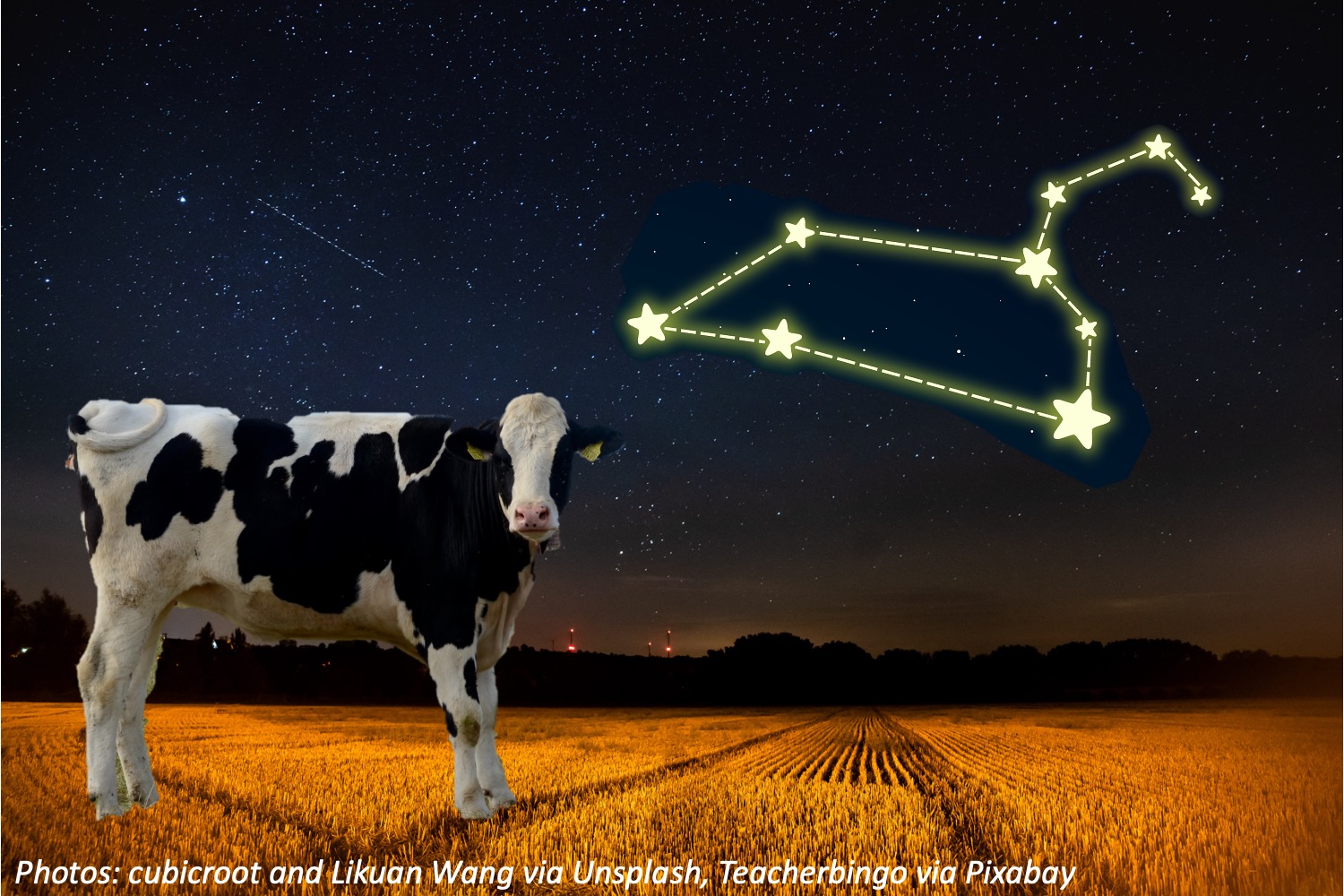Our friend Liam F. asked a great double-question: how many stars are in the universe, and how many can we see? Well, just our own Milky Way “galaxy,” or clump of stars, has around 100 billion stars, and there are billions of galaxies out there. Back on Earth, if you’re near big-city lights you’ll see only about 500 stars on a clear night, but out in the darker countryside you might see up to 15,000! If you can drive at least 200 miles from a city, you and the cows will have many more stars to count.
Wee ones: Look out the window after dark. Can you see any stars in the sky? If you can’t, you can try again tomorrow night!
Little kids: If you can see any stars out your window, try to count as many as you can. Bonus: If you can see 10 stars tonight but twice as many tomorrow, how many will you see tomorrow?
Big kids: If Leo the Lion normally has 9 stars, but in a darker sky Leo shows 4 times as many stars, how many can you see then? Bonus: You can divide the sky into equal-ish pieces, then count the stars in 1 piece to guess the whole sky. If you see 20 stars in each of 30 big pieces, how many stars can you see in total? (Hint if needed: What if there were just 2 stars in each piece?)
The sky’s the limit — for real: Which sky has more stars: a sky where you see 100 stars in each of 100 pieces, or a sky with 40 stars in each of 300 pieces?
Answers:
Wee ones: Different for everyone…see if you can spot at least 1 bright star! It might be a planet if it isn’t twinkling.
Little kids: Again, different for everyone…try it on a clear night. Bonus: 20 stars.
Big kids: 36 stars.. Bonus: 600 stars.
The sky’s the limit: The sky with 40 each in 300 pieces. That one has 12,000 stars, while the other has just 10,000.

